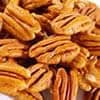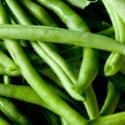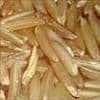Low Sodium Foods for People with High Blood Pressure (Hypertension)

Sodium is an essential nutrient required by the body for maintaining blood volume and pressure and for transmitting nerve impulses.
Sodium, together with chloride forms table salt or sodium chloride. Processed foods are by far the largest contributor of sodium in the diet, accounting for about 80% of our total sodium intake.
Over-consumption of sodium increases the risk of developing high blood pressure (hypertension), which in turn increases the risk of heart disease and stroke. As such, it is wise to regulate the amount of sodium you eat, and if you have high blood pressure to restrict your consumption of sodium, while boosting your consumption of potassium.
The current daily value (DV) for sodium is 2300mg, however, the American Heart Association recommends that people with high blood pressure eat less than 1500mg per day or less than 3/4 of a tablespoon of salt.
Fortunately, almost all foods are naturally low in sodium and it is easy to avoid consuming sodium if you stick to eating whole unprocessed foods without adding any salt or sauces. So a low sodium diet could be seen as more of an exercise in avoiding high sodium foods, than eating low sodium foods.
Healthy low sodium foods include vegetables, fruits, beans, grains, legumes, nuts, meats, oils, and fish. Be sure foods are not canned, or otherwise prepared with salt, or sauces that contain salt. Below is an overview of the top 10 foods lowest in sodium for your blood pressure diet.
List of Low Sodium Foods
 1 Pecans
1 Pecans| Sodium per Oz | Sodium per 100g | Sodium per 200 Calories |
|---|---|---|
| 0mg (0% DV) | 0mg (0% DV) | 0mg (0% DV) |
More Low Sodium Nuts
- 0% DV in 1 oz of almonds
- 0% DV in 1 oz of pistachios
- 0% DV in 1 oz of walnuts
Low sodium numbers only apply to unsalted nuts.
See the full list of nuts low in sodium.
 2 Olive Oil
2 Olive Oil| Sodium per Tablespoon | Sodium per 100g | Sodium per 200 Calories |
|---|---|---|
| 0.1mg (0% DV) | 2mg (0% DV) | 0.5mg (0% DV) |
More Low Sodium Oils
- 0% DV in 1 tblsp of peanut oil
- 0% DV in 1 tblsp of sesame oil
- 0% DV in 1 tblsp of rice bran oil
See the full list of low sodium fats and oils.
 3 Basil
3 Basil| Sodium 2 Tblsp | Sodium per 100g | Sodium per 200 Calories |
|---|---|---|
| 0.2mg (0% DV) | 4mg (0% DV) | 34.8mg (2% DV) |
More Low Sodium Herbs
- 0% DV in 1 tsp of thyme
- 0% DV in 1 tsp of rosemary
- 0% DV in 1 tsp of dried oregano
See the full list of spices and herbs low in sodium.
 4 Cinnamon
4 Cinnamon| Sodium 1 Tblsp | Sodium per 100g | Sodium per 200 Calories |
|---|---|---|
| 0.8mg (0% DV) | 10mg (0% DV) | 8.1mg (0% DV) |
More Low Sodium Spices
- 0% DV in 1 tsp of pepper
- 0% DV in 1 tsp of cayenne pepper
- 0% DV in 1 tsp of nutmeg
See the full list of spices and herbs low in sodium.
 5 Apples
5 Apples| Sodium per Cup | Sodium per 100g | Sodium per 200 Calories |
|---|---|---|
| 1.3mg (0% DV) | 1mg (0% DV) | 3.8mg (0% DV) |
More Fruits Low in Sodium
- 0% DV in 1 cup of cherries
- 0% DV in 1 cup of bananas
- 0% DV in 1 tsp of oranges
Almost all fruits are low in sodium. See the full list of 146 low sodium fruits.
 6 Green (Snap) Beans
6 Green (Snap) Beans| Sodium per Cup Cooked | Sodium per 100g | Sodium per 200 Calories |
|---|---|---|
| 1.3mg (0% DV) | 1mg (0% DV) | 5.7mg (0% DV) |
More Vegetables Low in Sodium
- 0% DV in 1 cup of cucumber
- 0% DV in 1 cup of peas
- 1% DV in 1 cup of spinach
Almost all vegetables are low in sodium. See the full list of 200 low sodium vegetables.
 7 Kidney Beans
7 Kidney Beans| Sodium per Cup | Sodium per 100g | Sodium per 200 Calories |
|---|---|---|
| 1.8mg (0% DV) | 1mg (0% DV) | 1.6mg (0% DV) |
More Beans and Lentils Low in Sodium
- 0% DV in 1 cup of navy beans
- 0% DV in 1 cup of pinto beans
- 1% DV in 1 cup of black beans
Note: Note: Beware of high sodium levels in canned beans with added salt.
See the full list of beans low in sodium.
 8 Brown Rice
8 Brown Rice| Sodium per Cup | Sodium per 100g | Sodium per 200 Calories |
|---|---|---|
| 2mg (0% DV) | 1mg (0% DV) | 1.8mg (0% DV) |
More Grains Low in Sodium
- 0% DV in 1 cup of oatmeal
- 0% DV in 1 cup of cornmeal (grits)
- 1% DV in 1 cup of quinoa
See the full list of grains low in sodium.
 9 Lean Chicken Breast
9 Lean Chicken Breast| Sodium in a 6oz Breast | Sodium per 100g | Sodium per 200 Calories |
|---|---|---|
| 79.9mg (3% DV) | 47mg (2% DV) | 59.9mg (3% DV) |
 10 Salmon
10 Salmon| Sodium per 6oz Fillet | Sodium per 100g | Sodium per 200 Calories |
|---|---|---|
| 95.2mg (4% DV) | 56mg (2% DV) | 61.5mg (3% DV) |
Other Fish Low in Sodium
- 3% DV in a trout fillet
- 4% DV in a tuna fillet
- 4% DV in a salmon fillet
See all fish low in sodium.
About the Data
Data for the curated food lists comes from the USDA Food Data Central Repository.
You can check our data against the USDA by clicking the (Source) link at the bottom of each food listing.
Note: When checking data please be sure the serving sizes are the same. In the rare case you find any difference, please contact us and we will fix it right away.
About Nutrient Targets
Setting targets can provide a guide to healthy eating.
Some of the most popular targets include:- Daily Value (%DV) - The daily value (%DV) is a general guideline for consumption that will prevent deficiency of a particular nutrient in most people. The %DV refers to the percentage of an amount that's found in a single serving of a food. It also accounts for absorption factors. It is set by the U.S. FDA.
- Recommended Dietary Allowance (%RDA) - The RDA sets an average daily dietary intake level that is sufficient to meet the nutrient requirements of nearly all (97.5%) healthy individuals. It's more specific than the daily value, and varies by age and gender. The RDA is set by the US National Instutites of Health.
- Reference Dietary Intake (%RDI) -The reference dietary intake is similar to the recommended daily allowance, but is specific to age and gender. The RDI for amino acids is set by the U.N. World Health Organization.
- Adequate Intake (%AI) - This value is primarily used in reference to omega-3 and omega-6 fats. The Adequate Intake is set by the U.S. Institute of Medicine. Because there is less evidence to determine the ideal targets for consumption of these nutrients, the specific amount is considered to be less reliable. Using the term Adequate Intake, rather than one of the other terms, helps to emphasize that the ideal intake of that particular nutrient has not yet been scientifically determined.
See the Guide to Recommended Daily Intakes for more information.
Want to set your own targets? Sign up for an account and set custom targets in the daily meal planner.From the Nutrient Ranking Tool
Use the ranking tool links below to select foods and create your own food list to share or print.
- Foods High in Sodium
- Foods Low in Sodium
- Vegetables High in Sodium
- Fruits High in Sodium
- Vegetarian Foods High in Sodium
- Nuts High in Sodium
- Grains High in Sodium
- Beans High in Sodium
- Dairy High in Sodium
- Breakfast Cereals High in Sodium
- Fast Foods High in Sodium
View more nutrients with the nutrient ranking tool, or see ratios with the nutrient ratio tool.
Related
Data Sources and References
Try the recipe nutrition calculator, or daily meal planner.
Create a free account to log and track foods.
